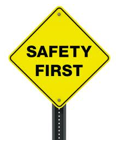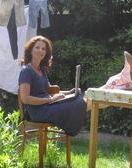 Guest Post
Guest Post
Fall is a beautiful time of year. The leaves begin to paint the ground with dazzling shades of red, orange and yellow. The heat of summer is replaced by cool, crisp autumn winds. However, the change of seasons doesn’t come without risk. To keep your home and family safe this fall and winter, take a few minutes to read over the following tips:
Get a flu shot
Getting vaccinated is the best way to protect you and your family against the flu virus. Flu shots cause antibodies to develop in the body approximately two weeks after you are vaccinated.
Check your smoke alarms
You should have smoke alarms installed on every level of your home. If you don’t currently have a home security system, ADT offers 24/7 monitoring for burglary, fire, carbon monoxide and more. Check out http://www.homesecuritysystems.com/adt-wireless-home-security to learn more. Once you have the detectors installed, you should check them routinely – ideally once per month – to verify they are working properly.
Practice safe cooking
Cooking fires are the leading cause of fires and injuries in the home. Most of these fires start because of unattended cooking. Consequently, it’s important to stay in the kitchen while you’re grilling, broiling or frying food. If you have to leave the kitchen – even for just a few minutes – make sure to turn off the stove. It’s also a good idea to store a fire extinguisher nearby.
Set up a fire escape plan
Although a smoke alarm should warn you when there is a fire, it’s extremely important that everyone in your family knows what to do in this worst-case scenario. As part of your plan, you should figure out a minimum of two ways to escape from each part of your home in case obvious exits are inaccessible. If you have young children, coming up with a drawing may help them better understand your plan.
Have your chimney inspected
Before you begin using your fireplace, you should have your chimney inspected and cleaned by a professional. Cracks in your chimney could release carbon monoxide into your home while you’re burning a fire in the fireplace. Bids nests, soot or other blockages in the chimney could also lead to fires or prevent carbon monoxide from escaping.

